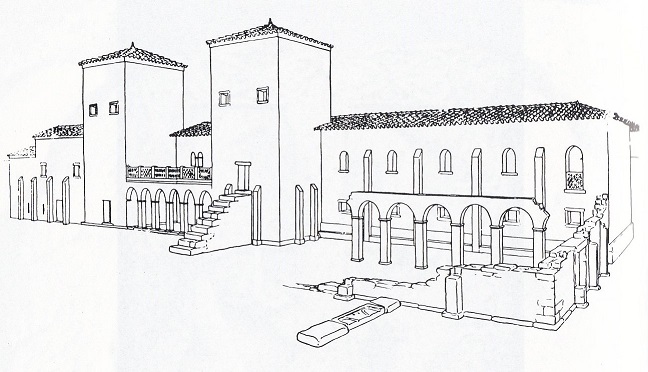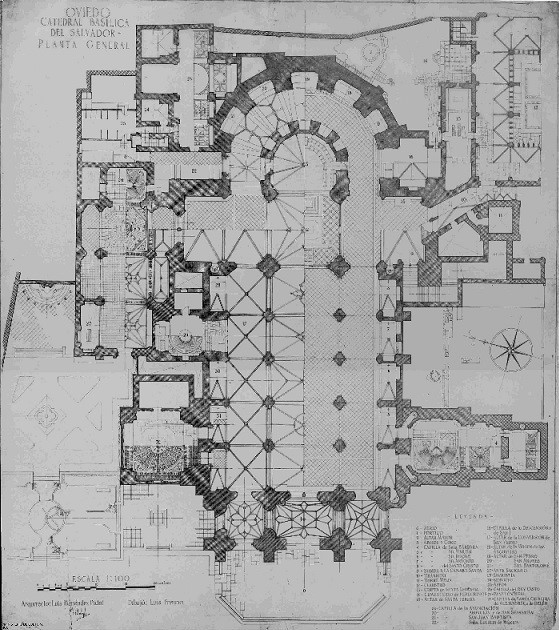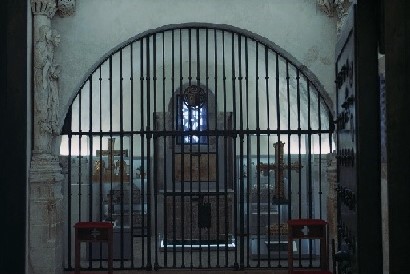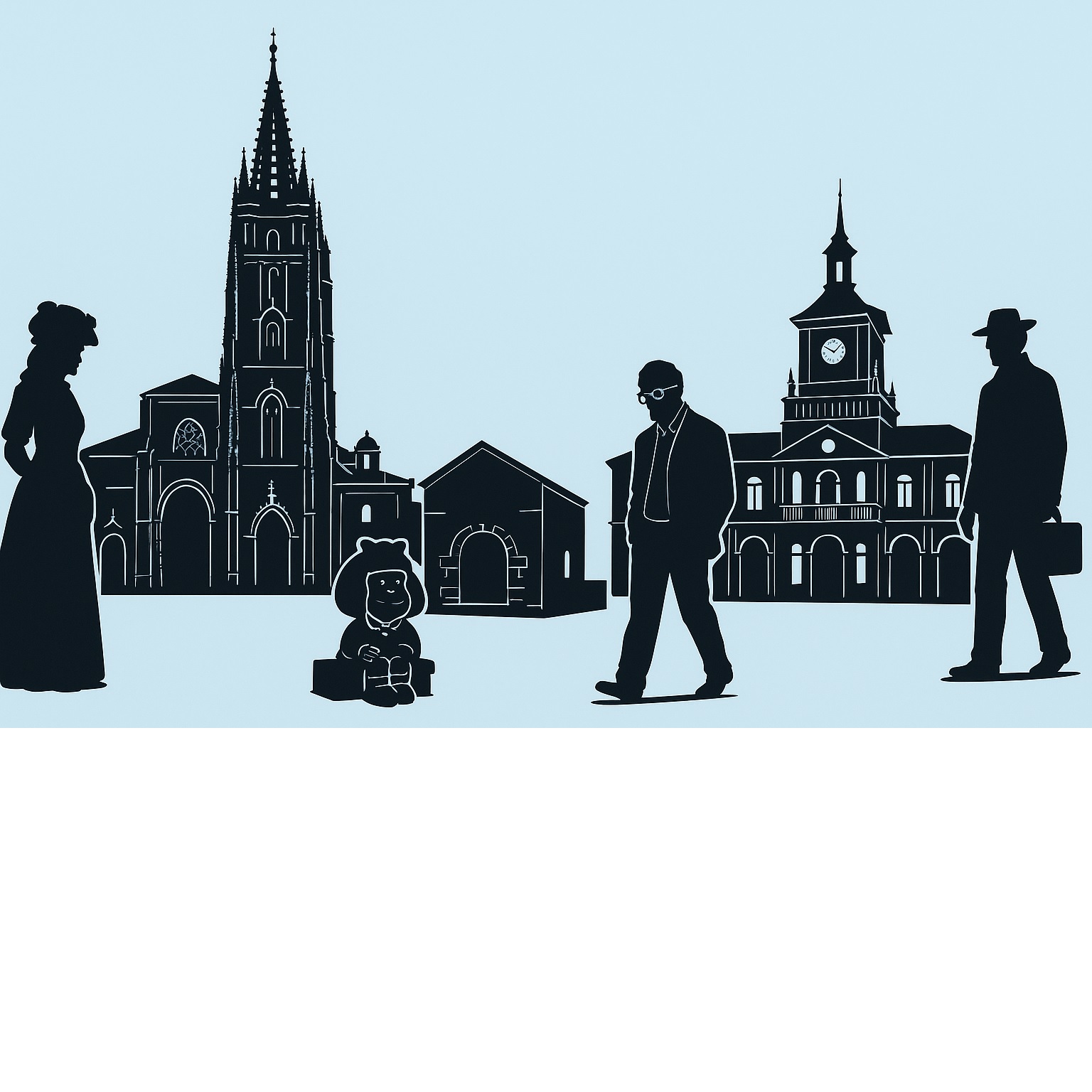History of the Cathedral
The Cathedral of San Salvador of Oviedo originated from the basilica built by King Fruela I in the 8th century. However, the current structure began construction in the late 13th century and was completed in the 16th century, combining Gothic, Renaissance, and Baroque styles.

Recreation of King Fruela's palace complex
The current cathedral was built over the remains of the pre-Romanesque basilica and King Fruela I's palace. For centuries, it has been an important pilgrimage center, especially for housing the Holy Chamber with its sacred relics.
Key historical facts
Architecture and Structure
The Cathedral of Oviedo is a magnificent example of Gothic architecture with later additions. Its imposing 80-meter tower dominates the city's skyline.

Architectural plan of Oviedo Cathedral
Among its most notable features:
The Holy Chamber
Declared a UNESCO World Heritage Site, the Holy Chamber is the cathedral's most valuable treasure. Built in the 9th century as a royal chapel, it houses the most important relics of the Kingdom of Asturias.

Interior of the Holy Chamber, a jewel of Asturian pre-Romanesque art
This pre-Romanesque construction has survived earthquakes and wars, maintaining its original structure intact. Its barrel vaults and semicircular arches are typical of Asturian art.
The Holy Relics
The Cathedral houses some of Christianity's most important relics, brought from Toledo to protect them from the Muslim invasion:
Main Relics
These relics made Oviedo an important pilgrimage center, complementing the Way of Saint James. In the Middle Ages, pilgrims visited the Cathedral to venerate these sacred relics.
Visits and Opening Hours
Oviedo Cathedral is open daily, with different schedules for worship and tourism. Guided tours include the Holy Chamber, the cloister, and the museum.
Visitor Information
We recommend spending at least 1.5 hours to calmly explore all areas. The Cathedral also offers audio guides in several languages for international visitors.



